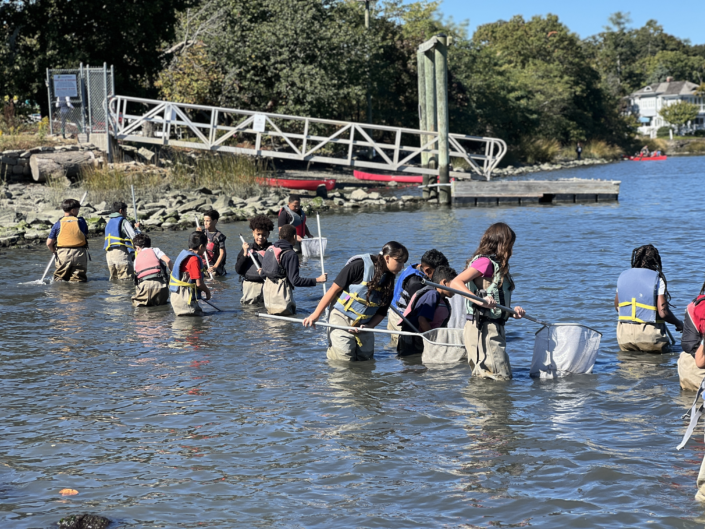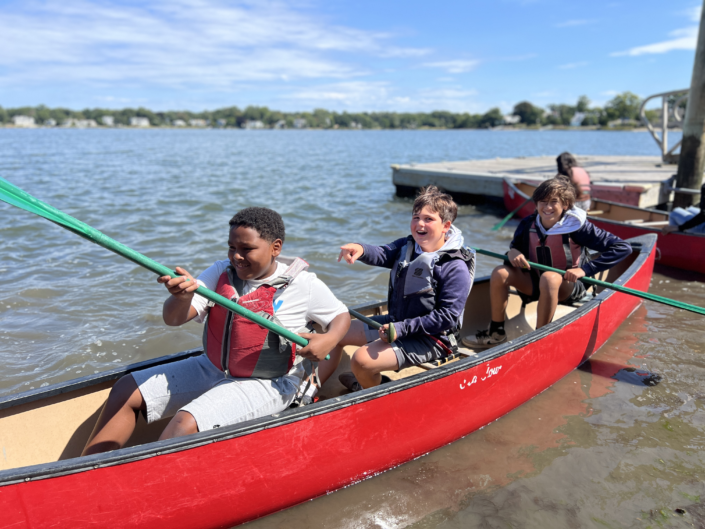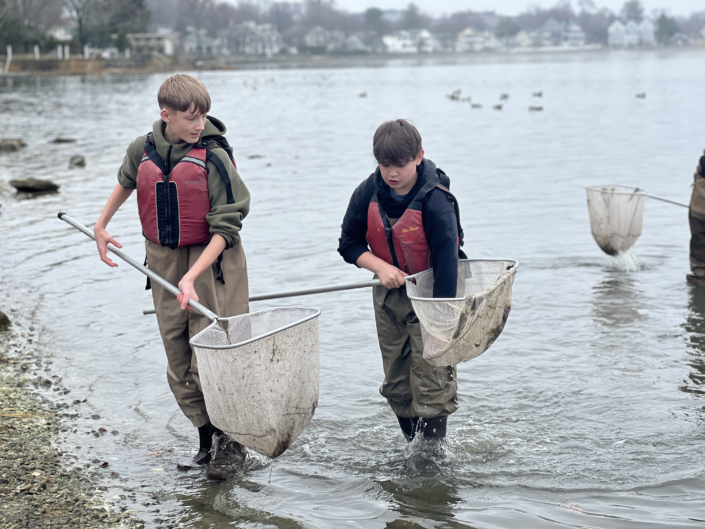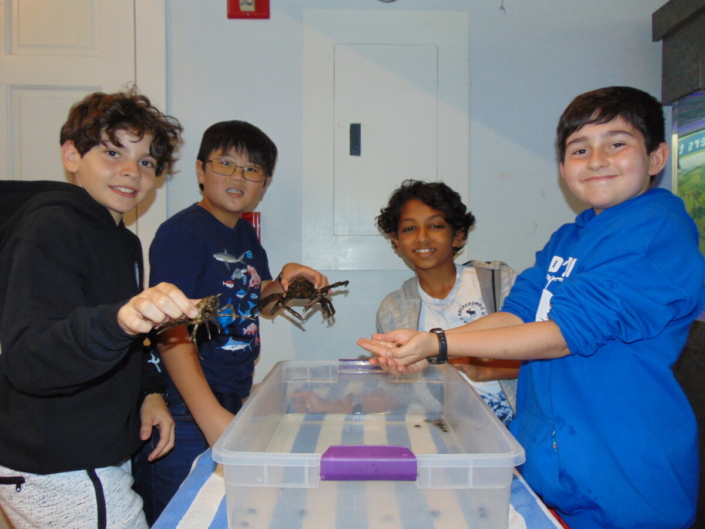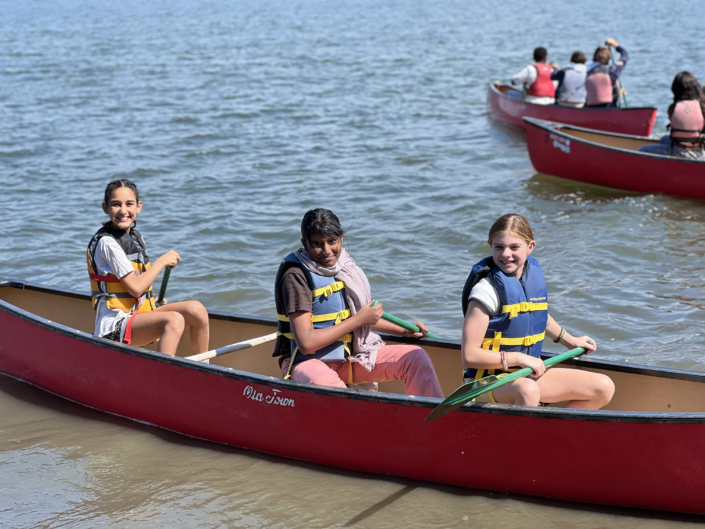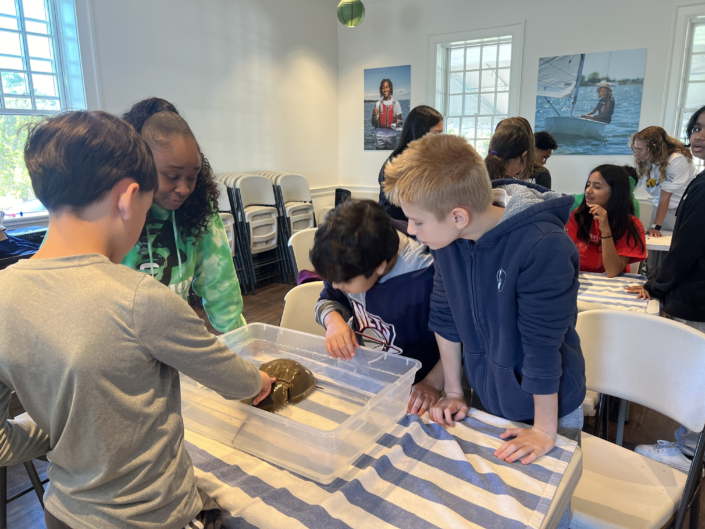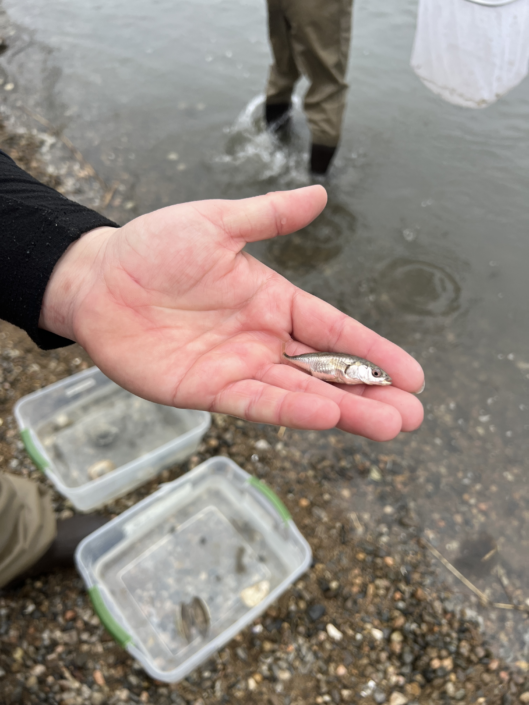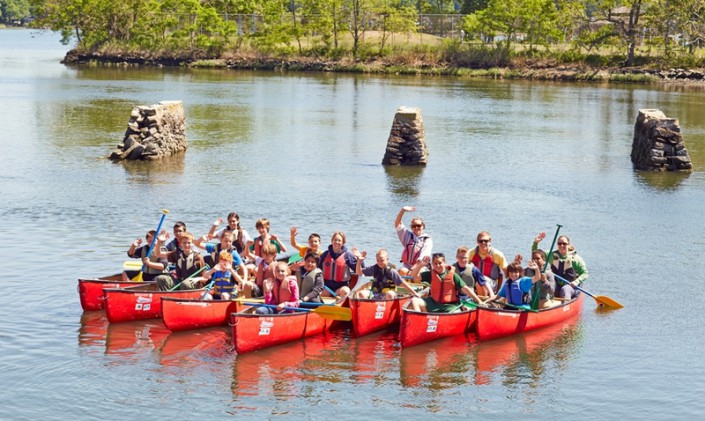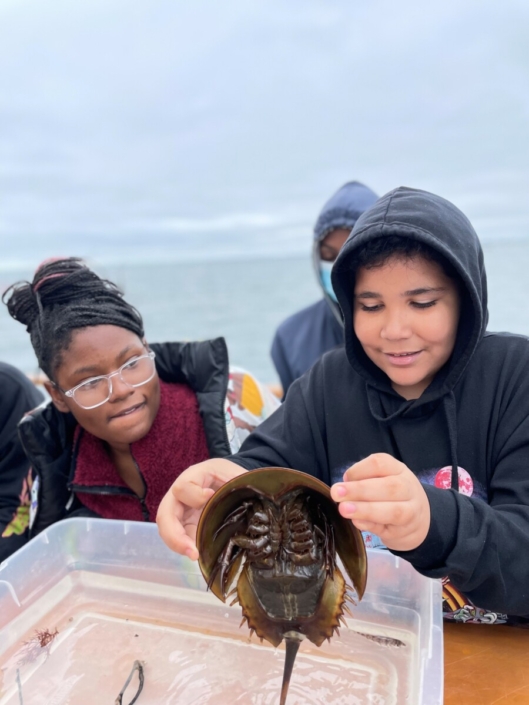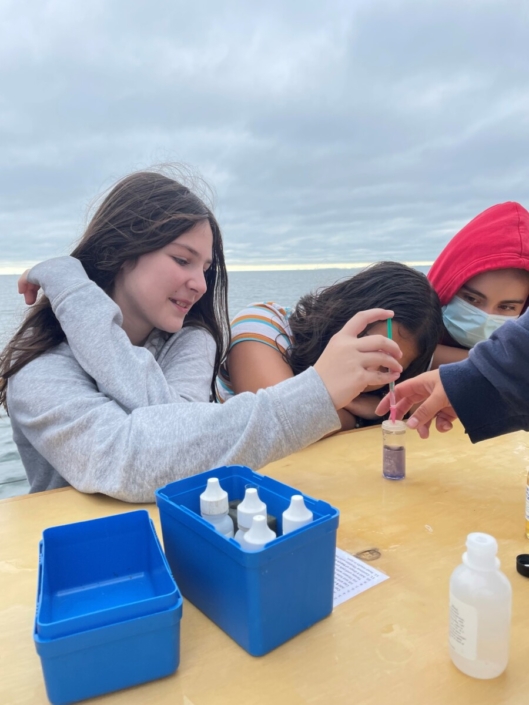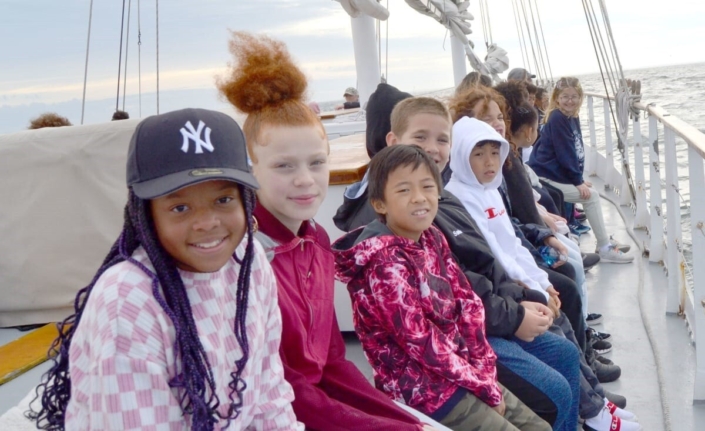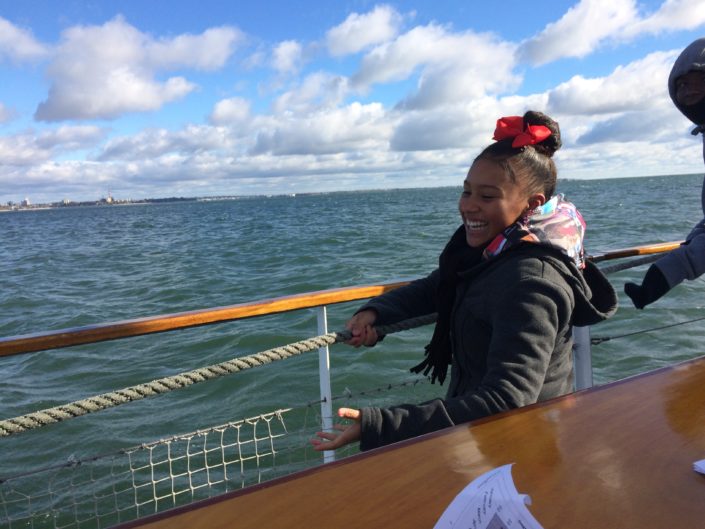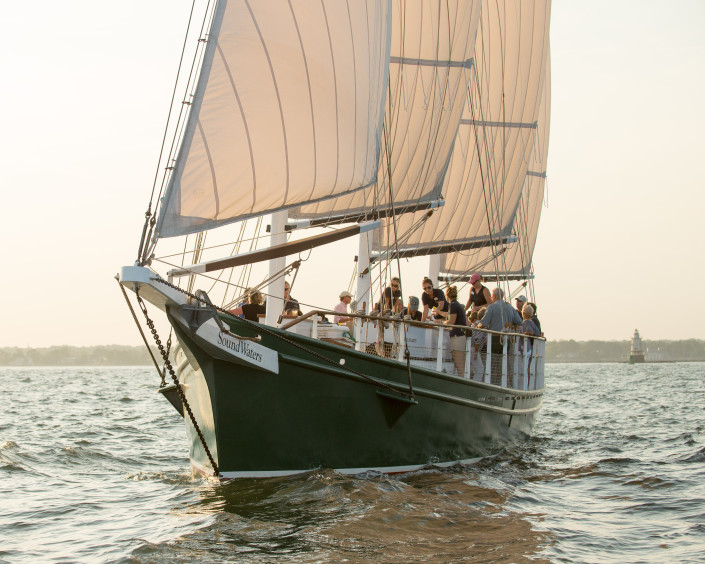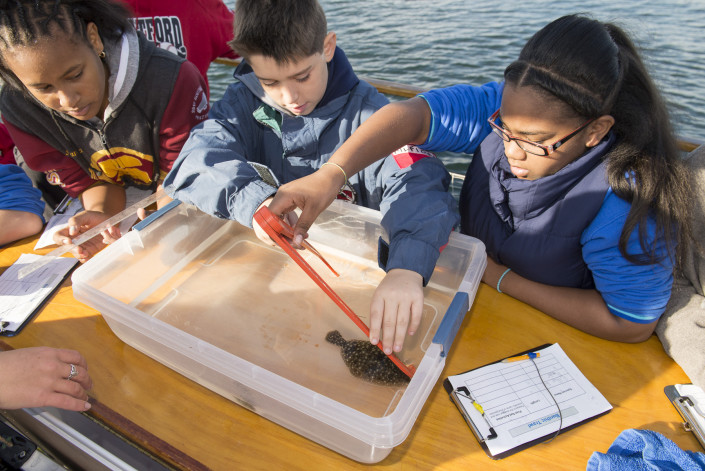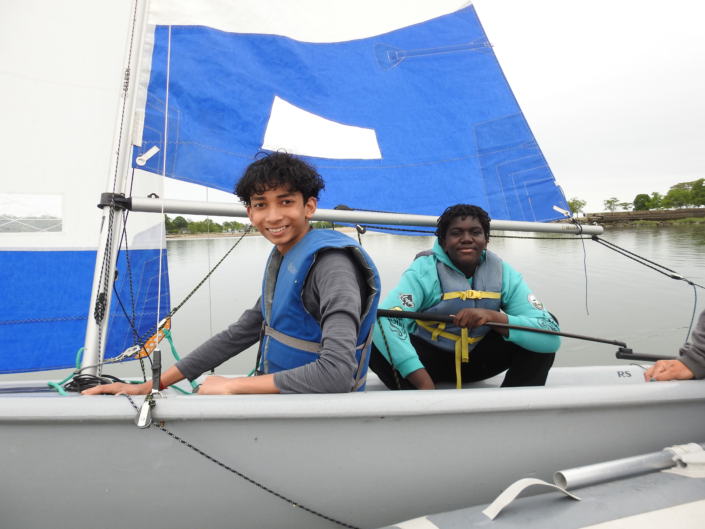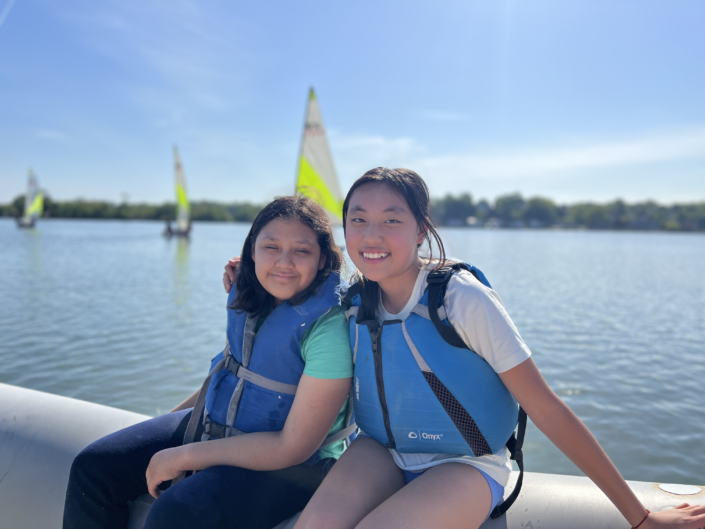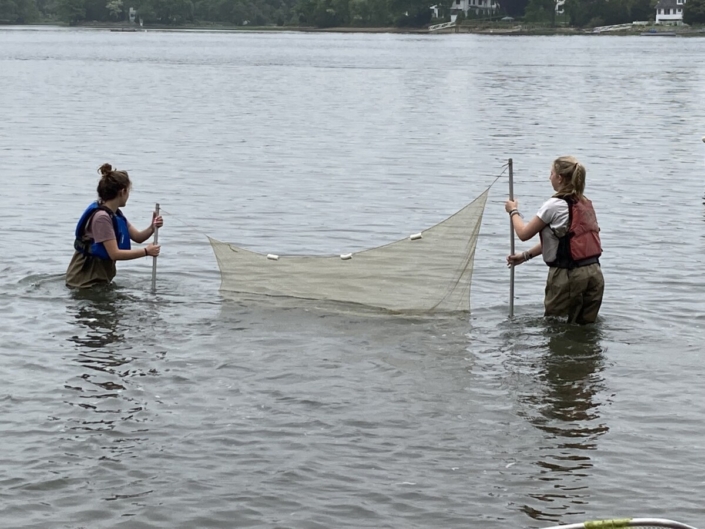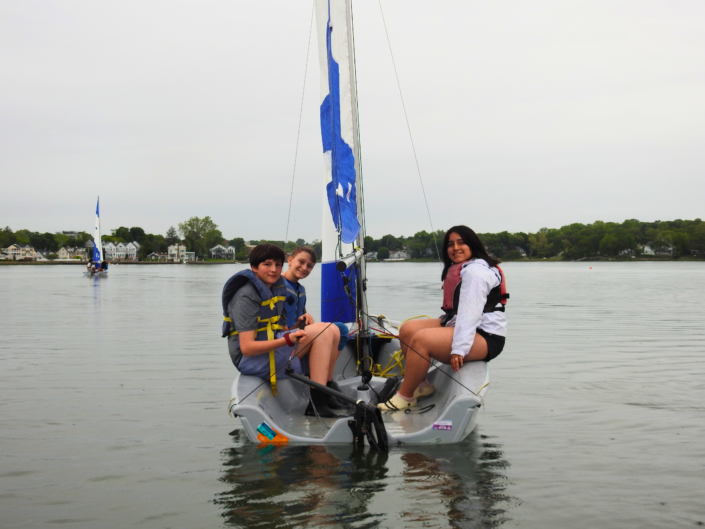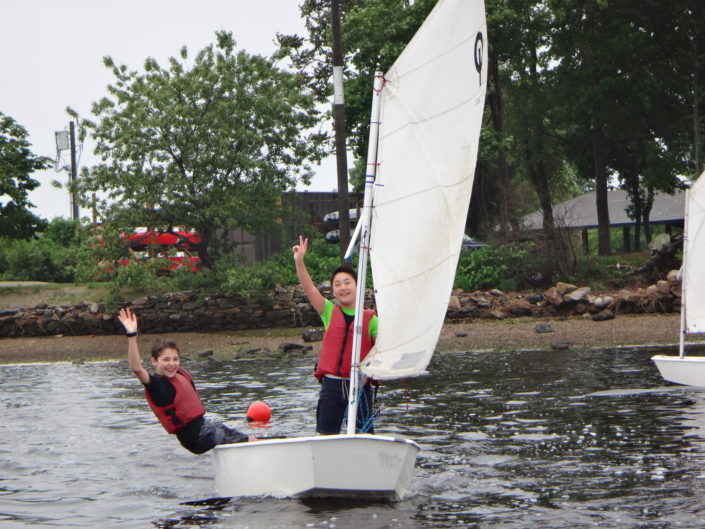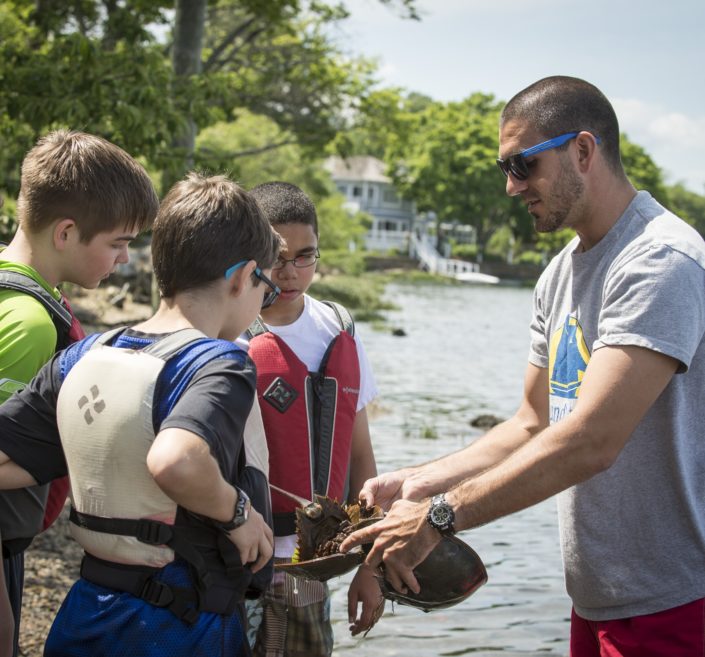Science on the Sound – Floating Classroom
Welcome aboard the Schooner SoundWaters!
Learn key concepts and theories while aboard the Schooner SoundWaters. Your students will test the water quality of Long Island Sound, demonstrate mechanical advantage, touch and investigate the structures of live animals and more! Challenging, rigorous science in an exciting and unique setting.
Overview of Activities:
Our shipboard learning is focused on hands-on activities that allow our students to act as field scientists. They will use real scientific tools to collect data, make observations, and understand the ways we impact and are impacted by the Long Island Sound. Students will be engaged in active learning while also having the opportunity to appreciate and develop a deeper connection to one of our most valuable natural resources.
Activities
Water sampling– How can we learn about Long Island Sound without looking at the water itself? Take samples of water from different locations and use tools to take measurements and compare them in order to learn more about the way water quality affects the health of the Sound.
Intertidal habitats– Examine a model of the rocky intertidal environment and meet and hold some of the creatures that call it home. Get your hands dirty and learn how the intertidal zone is impacted by human activities, and how we are affected by it.
Trawling– Deploy and retrieve the trawl net in order to learn about some of the equipment that field scientists use to study biodiversity and to come face-to-face with some of the residents of Long Island Sound. Collect, study, and touch animals from the lowest levels of the Sound.
Raising sails– Work together to set sail! Using a bit of muscle, we can turn our 80-foot floating classroom into a quiet, emissions-free way to travel Long Island Sound as it has been traveled for hundreds of years.
Field observations– Take a moment to simply observe the Sound and use your senses to determine the conditions for your field study for that day. Compare how these conditions differ from what you typically experience and understand what a special and unique place Long Island Sound is.
Plankton sampling– Take a closer look at the critical (but often tiny) members of Long Island Sound that fill its waters. Use a plankton net to retrieve a sample of plankton and use field scopes in order to identify what species can be found here. Discuss the role that plankton play in the Long Island Sound food web and how they directly affect us, even on land.
After-School Science and Sailing
Long Island Sound offers an exceptional environment to learn how to sail, develop navigational skills and study a wide range of marine life and habitats, water quality and human impact on the environment. The SoundWaters Science and Sailing curriculum is focused on teaching students the science, technology, engineering, and mathematics that are inherent to sailing and offers a deeper look into many of the environmental science concepts learned during weekly experiments. We offer a high quality sailing instruction for all levels of experience. From beginner to seasoned racer SoundWaters will help students advance their skills to the next level.
The program meets once a week for 3 hours a day after school for 10 sessions.
Boat Anatomy
Students will learn the different parts of a boat as they rig and sail them on Holly Pond. Learn how to identify and understand the parts of your sailboat by playing fun games to reinforce what you’ve learned.
Navigating a boat
Sail like a scientist! Sailors have been using their engineering skills for hundreds of years to help them navigate their world; now it’s your turn! Use real charts, compasses, simple tools, and a little old-fashioned ingenuity to discover our location and track our speed and progress through the Long Island Sound. How do these ancient skills compare to a modern GPS system? Learning how to sail can be hard. But with SoundWaters you will learn how to position your body and hold the controls of the sailboat to be successful. Develop skills to steer your boat straight, read a chart and plot your course.
Sail Handling
Learn how to make your boat stop, and go by controlling the sails. This is important for beginner sailors to know how to do so they can be comfortable no matter the weather conditions. Play games like ‘what time is it Captain?’ to reinforce.
Points of Sail
By the end of this lesson, sailors will understand how to position their sails so they can sail in any direction, no matter where the wind is coming from. Play games on land to practice each point of sail. Head out on your boat and play games like ‘follow the leader.’
Reading the Weather & Harnessing the Wind
Learn about the conditions that make your sailboat move. Make your own anemometer so you can take measurements of the wind speed.
Animal Adaptations
The Long Island Sound is teeming with life! Help launch and retrieve our special trawl net, and see what’s living down deep in the Sound. Every sail brings a unique catch! Learn about what makes the creatures we find uniquely suited to their habitats, and get an up close and personal encounter with each species. What can we discover by using our senses to investigate these animals?
LIS Observations
It’s amazing what our powers of observation can do! Learn how to turn the things we can observe from on board our schooner into a wealth of knowledge! Learn what the “road signs” all around us mean, and how sailors use them every day. What are these things telling us now? Feel the wind on your face – what’s the direction and the speed? How should we sail the schooner as a result? And how do we fit in to the world of the Long Island Sound?


